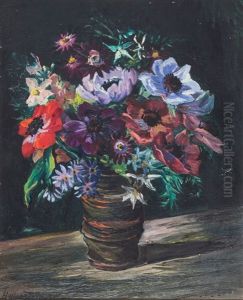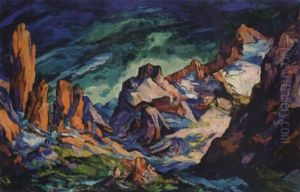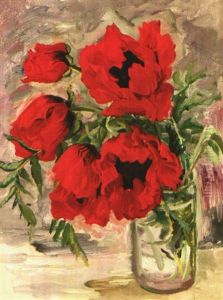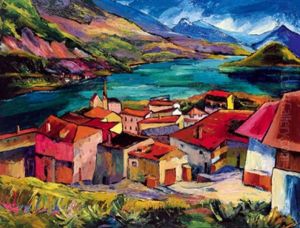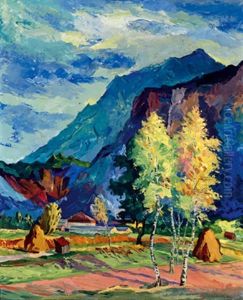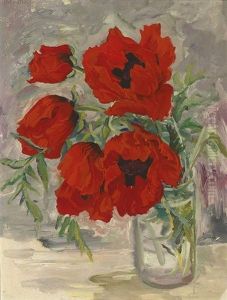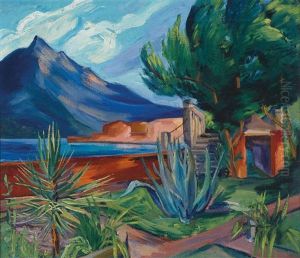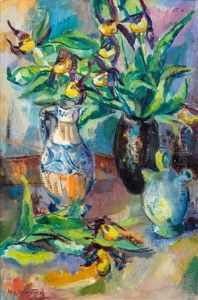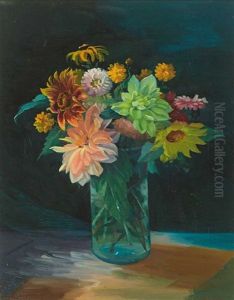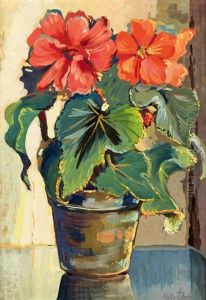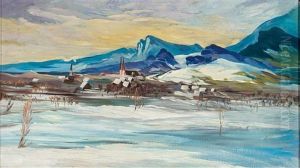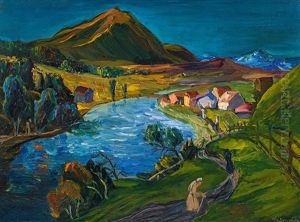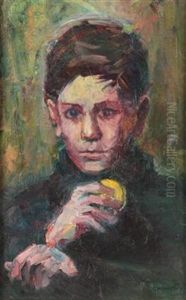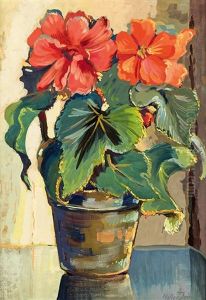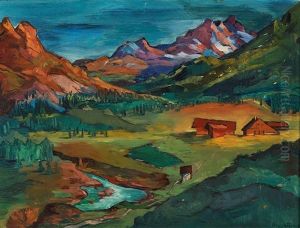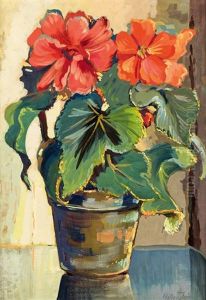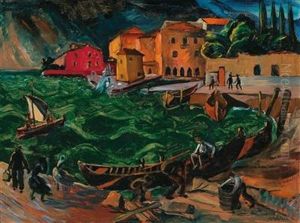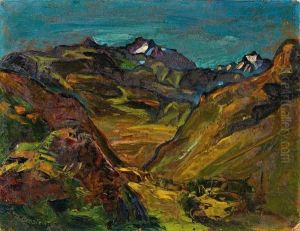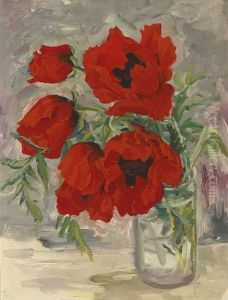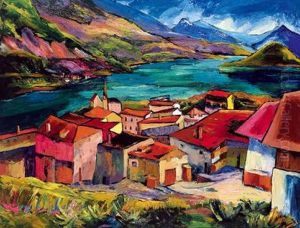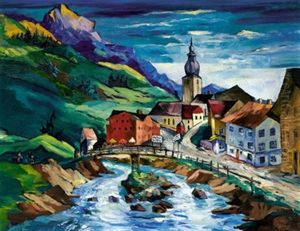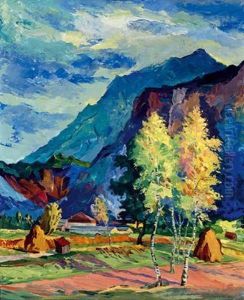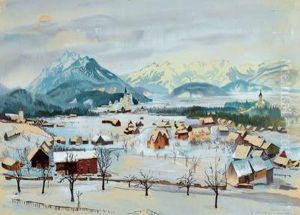Stephanie Hollenstein Paintings
Stephanie Hollenstein was an Austrian painter born on November 1, 1893, in Lustenau, Austria. Her work is often characterized by its expressionist style, and she is known for her landscapes, portraits, and still lifes, as well as her involvement in World War I as a combat nurse.
Hollenstein was raised in a family with modest means. Despite the lack of artistic tradition in her family, she developed an interest in art at an early age. She initially trained as an embroidery designer, which was a traditional and acceptable career path for women in her region at the time. However, her passion for painting led her to pursue a more formal education in the arts. She attended the Women's Academy in Munich, Germany, where she studied under Angelo Jank and Ludwig Herterich, who were influential in developing her early style.
During World War I, Stephanie Hollenstein felt a strong sense of patriotism and decided to contribute to the war effort. She disguised herself as a man and served as a combat nurse on the Italian front. Her experiences during the war deeply affected her, and this is reflected in some of her later works, which depict the harsh realities and the aftermath of the conflict.
After the war, Hollenstein returned to painting and continued to develop her style. She became an active member of the Tyrolean art scene and participated in numerous exhibitions. In the 1920s and 1930s, her work gained more recognition, and she was awarded several art prizes. Hollenstein's expressionist tendencies are evident in her use of bold colors and dynamic brushwork, which imbue her compositions with a sense of emotion and vitality.
Stephanie Hollenstein's career was cut short by her untimely death on May 22, 1944, during the tumultuous years of World War II. Despite her relatively brief career, she left behind a substantial body of work that continues to be studied and admired for its unique contribution to Austrian expressionism. Her legacy is preserved through exhibitions and collections in Austrian museums, and she remains an important figure in the country's art history.
